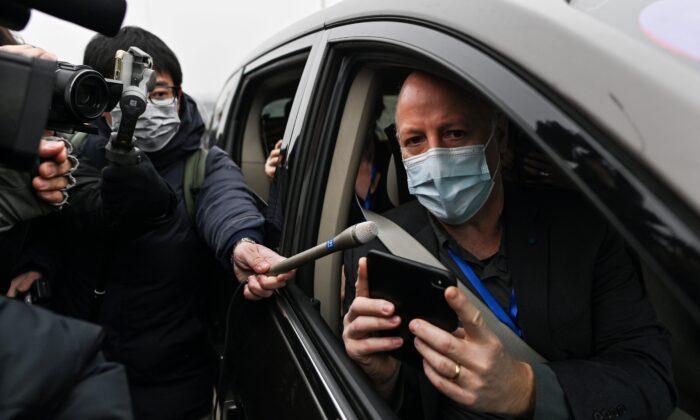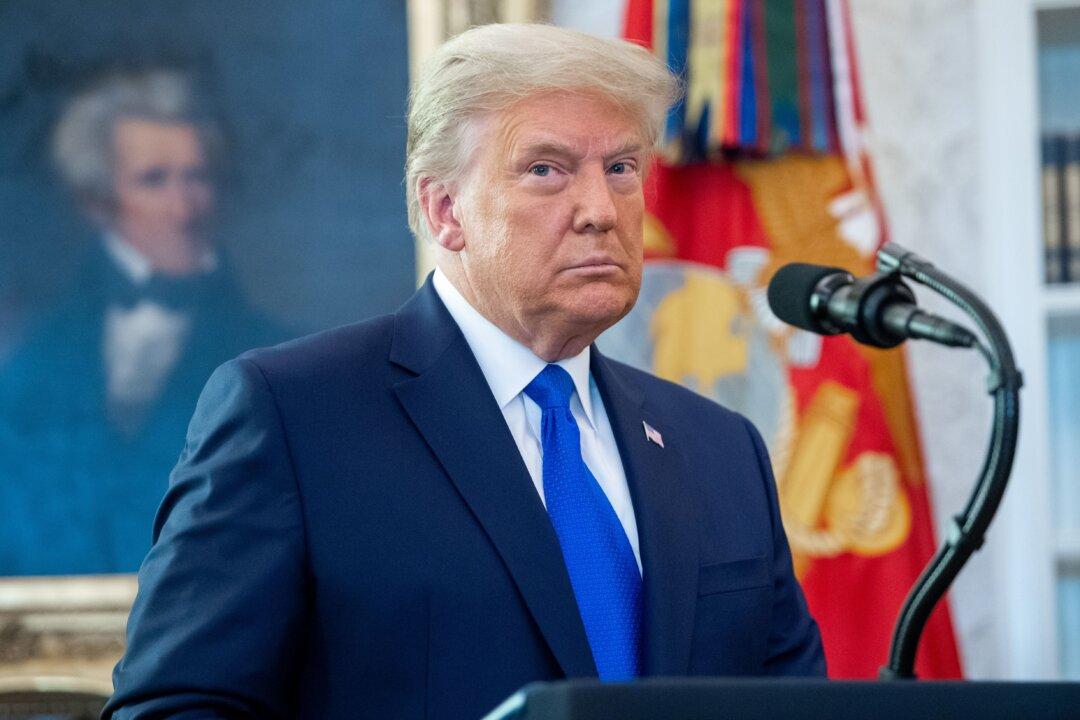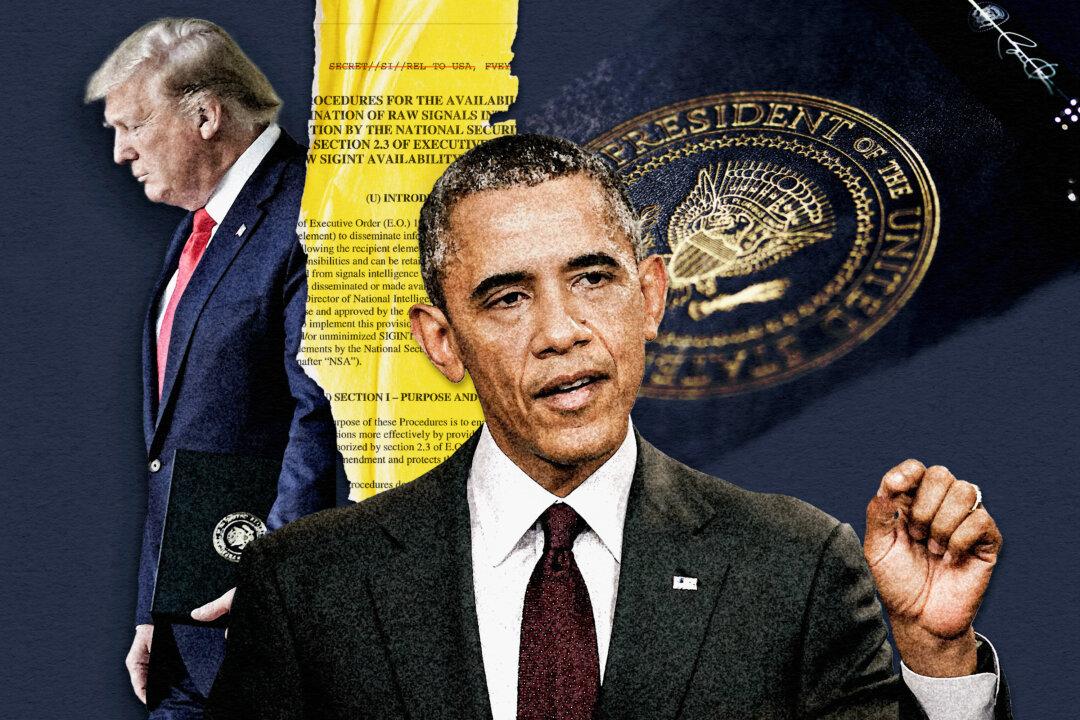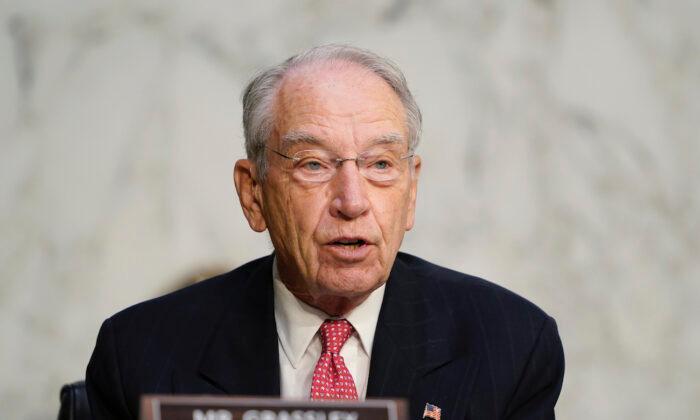Daszak’s letter not only failed to provide NIH with the required information, it also revealed that crucial virus data from EcoHealth’s experiments with the Wuhan Institute (WIV) are actively being censored by Chinese Communist Party authorities.
Additionally, Daszak revealed that EcoHealth and the lab continued to jointly conduct gain-of-function experiments into April 2020 and EcoHealth’s experiments may have continued beyond that point. The letter also disclosed the existence of additional EcoHealth progress reports on its activities in Wuhan that covered the critical periods directly before and immediately after the start of the pandemic. Those reports haven’t been made public.

In conjunction with this admission, the NIH sent a separate letter addressed to EcoHealth, which gave the organization five days to submit to NIH “any and all unpublished data” from its experiments at the Wuhan lab.
EcoHealth Cites ‘System Lockout’ for Submission Failure
NIH had demanded EcoHealth’s outstanding data after it became publicly known that the organization failed to submit a required fifth-year progress report on experiments it was doing at the Wuhan Institute in 2018 and 2019. EcoHealth’s failure to submit this report was only recently discovered, after The Intercept sued the NIH for documents relating to EcoHealth.Daszak said that EcoHealth had actually first uploaded the fifth-year report in July 2019—before the Sept. 30, 2019, deadline—but claimed that when they tried to “officially submit” the uploaded report, the system “locked” EcoHealth out “at that point.”

Daszak also claimed that EcoHealth made one request for “further information” about the submission failure from an NIH grant-management specialist, but didn’t receive a response. Daszak then blamed the NIH for EcoHealth’s submission failure by noting that NIH never sent a request for the fifth-year report despite being in “frequent communication” with NIH staff during that period.
Daszak said he heard nothing on the matter until July 23, when EcoHealth received the first demand letter from NIH—sent as a result of the Intercept lawsuit—requesting the missing fifth-year report. Daszak claimed that EcoHealth complied immediately but still had difficulty in circumventing the NIH “system lockout.”
Daszak also claimed that the NIH renewed EcoHealth’s grant in July 2019, and Daszak cited this new grant award from NIH as providing justification for his failure to submit the fifth-year report.
“Because the new award had been made and the work was permitted to commence, we had no indication there was anything missing.”
EcoHealth Gain-of-Function Work With Wuhan Lab Appears to Have Continued Into at Least 2020
Daszak’s disclosure of the existence of a new and previously unknown “Year 1” report for the period from mid-2019 to 2020 in the NIH renewal grant reveals that Daszak’s virus work with the Wuhan lab went well beyond the timeframe covered by the missing fifth-year report. Exactly how long EcoHealth’s work continued, and exactly what that work entailed, isn’t yet known.
Daszak’s letter acknowledged that “even though the grant was terminated and then suspended, and funding is not available to us to work on this, we have continued to comply with NIH reporting requests, and submitted reporting for Years 6 and 7 of this grant.”
EcoHealth Attempts to Obfuscate Virus Growth
Under the original NIH grant, EcoHealth was obligated to immediately stop any experiments that showed evidence of enhanced virus growth greater than 10 times compared to the original virus.However, EcoHealth didn’t immediately report, nor stop an experiment at the Institute that created novel coronaviruses with 10,000 times higher viral load—orders of magnitude greater than the limit that should have triggered the NIH obligation.
This experiment was belatedly reported after the fact as part of the fourth-year progress report submitted by EcoHealth in 2018. To make matters worse, related experiments continued into year 5–the period for which EcoHealth had originally failed to submit a progress report.
Daszak appears to have circumvented the NIH reporting requirements by claiming that the viral load data was based on “genome copies per gram not viral titer.” But the NIH never specified using “viral titer measuring”—a process that Daszak didn’t even undertake.

Daszak appears to have attempted to bolster his weak excuse, claiming that given the small number of humanized mice used to conduct the experiment, it was “uncertain whether the survival and weight loss data were statistically relevant.” In other words, Daszak was essentially arguing that the out-of-bounds results of EcoHealth’s experiments should be ignored because EcoHealth’s work had been sloppy.
EcoHealth Admits to CCP Censorship, Control of Data
In the last section of his letter, Daszak admitted that EcoHealth has still failed to provide the data demanded by NIH.The reference to the disruption of dialogue between scientists serves as a not-so-subtle reminder that access to much of the EcoHealth data is dependent on Chinese consent.
Daszak made that point abundantly clear when he told the NIH that he was unable to share genetic sequence data obtained through NIH-funded experiments precisely because that data was going through an approval process by Chinese Communist Party (CCP) authorities.

In other words, U.S. taxpayers gave Daszak millions of dollars, funded through Fauci’s organization—the National Institute of Allergy and Infectious Diseases—to conduct advanced gain-of-function experiments, only for the results of those experiments to be withheld and censored by the CCP.
In reality, it’s simply not knowable what viruses were studied—because Daszak hasn’t released all his data and because some significant portion of that data remains subject to CCP censorship.
While it appears as though EcoHealth and NIH are now engaged in a potentially escalating war of words, their interests remain fundamentally aligned. EcoHealth and NIH share the same underlying goal–to convince the world that they weren’t involved in the creation of COVID-19.








